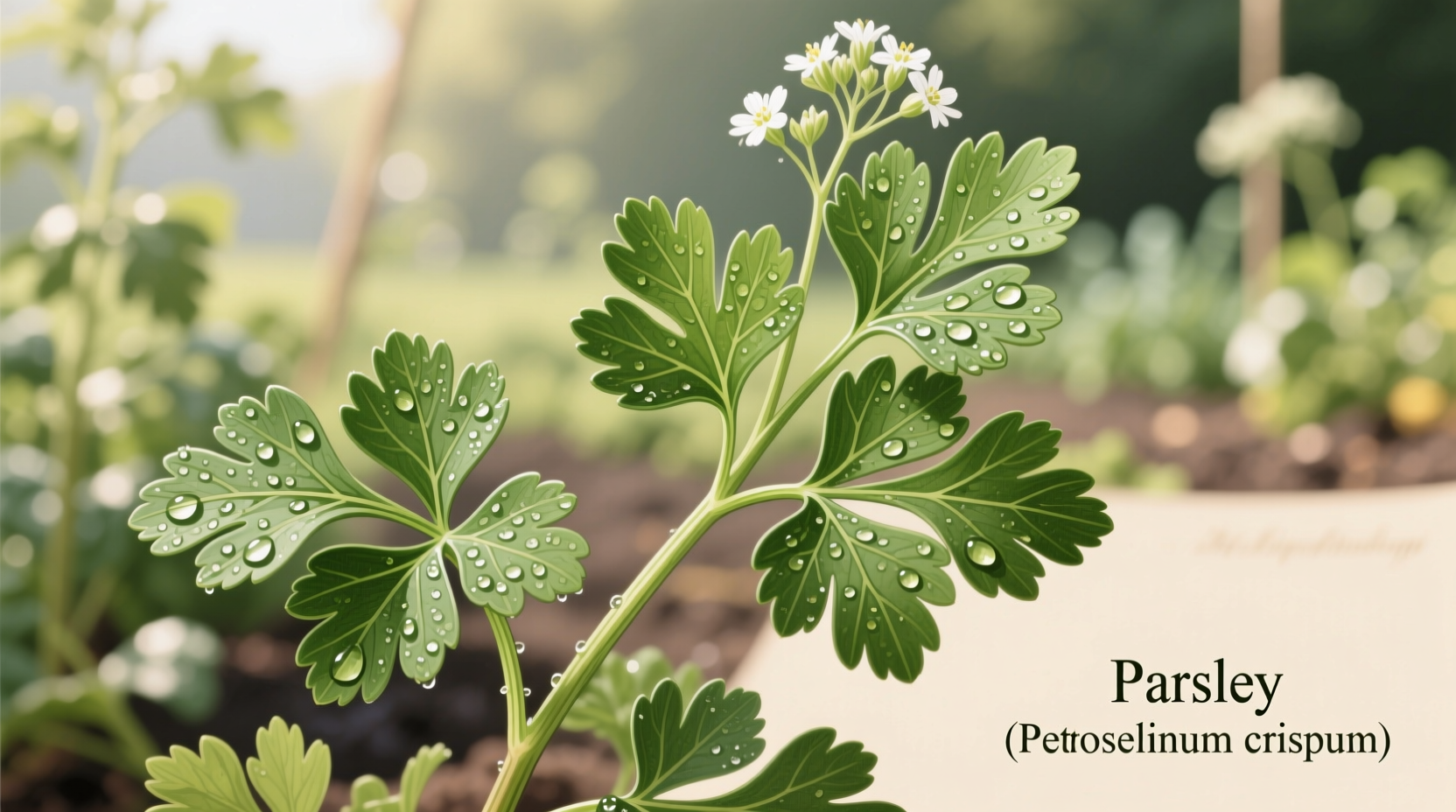When you wonder what is in parsley beyond its fresh green appearance, you're tapping into one of nature's most nutrient-dense herbs. This culinary staple packs remarkable nutritional value that explains its historical use in Mediterranean and European cuisines for both flavor and health.
Nutritional Powerhouse: What Makes Parsley Special
Understanding what nutrients are in parsley reveals why chefs and nutritionists value it beyond garnish duty. According to USDA FoodData Central, raw parsley delivers exceptional micronutrients per 100g serving:
| Nutrient | Amount | Daily Value % |
|---|---|---|
| Vitamin K | 1,640 mcg | 1,367% |
| Vitamin C | 133 mg | 148% |
| Vitamin A (RAE) | 421 mcg | 47% |
| Folate | 152 mcg | 38% |
| Iron | 6.2 mg | 34% |
This nutritional density explains why parsley has been valued since ancient Greek times. The National Institutes of Health confirms that vitamin K in parsley supports blood clotting and bone metabolism, while its vitamin C content boosts immune function and collagen production.
Key Bioactive Compounds in Parsley
Beyond basic nutrition, what chemical compounds are in parsley creates its distinctive flavor and health properties:
- Apiol - Primary compound giving parsley its characteristic aroma
- Myristicin - Phenylpropene with potential neuroprotective effects studied in Journal of Agricultural and Food Chemistry
- Flavonoids (apigenin, luteolin) - Powerful antioxidants with anti-inflammatory properties
- Carotenoids (beta-carotene, lutein) - Support eye health and cellular protection
Research published in Phytotherapy Research demonstrates that parsley's flavonoid content contributes significantly to its antioxidant capacity, helping combat oxidative stress in the body.

Practical Health Benefits: What Parsley Does for Your Body
Knowing what is in fresh parsley helps you leverage its benefits effectively:
Bone Health Support
The exceptional vitamin K content (1,640 mcg per 100g) plays a crucial role in bone mineralization. A 2017 review in Nutrients found that adequate vitamin K intake correlates with reduced fracture risk and improved bone density.
Antioxidant Protection
Parsley's combination of vitamin C, flavonoids, and carotenoids creates a synergistic antioxidant effect. The USDA's Phytochemical Database identifies parsley as having one of the highest ORAC (Oxygen Radical Absorbance Capacity) values among common herbs.
Contextual Considerations
While generally safe, individuals on blood-thinning medications should monitor parsley intake due to its high vitamin K content. The European Food Safety Authority notes that consistent vitamin K consumption is more important than complete avoidance for these patients.
Culinary Applications: Maximizing Parsley's Potential
Understanding what is in Italian parsley versus curly parsley helps you choose the right variety:
- Flat-leaf (Italian) parsley - Higher concentration of volatile oils (20-30% more apiol), stronger flavor, preferred for cooking
- Curly parsley - Milder flavor, often used as garnish, slightly higher in certain carotenoids
Professional chefs maximize parsley's compounds by:
- Adding towards the end of cooking to preserve volatile oils
- Using both leaves and stems (stems contain higher apiol concentration)
- Pairing with lemon to enhance vitamin C absorption
Historical Evolution of Parsley Use
Parsley's journey from ancient medicinal herb to kitchen staple reveals why what's in parsley matters historically:
- 1500 BCE - First documented use in Egyptian medicine for urinary tract health
- Ancient Greece - Used in athletic competitions and as symbol of death (due to association with Persephone)
- Roman Empire - Employed as breath freshener and digestive aid
- Medieval Europe - Recognized for wound healing properties in herbals
- 19th Century - Transitioned to culinary staple in French and Italian cuisines
This historical context explains why European culinary traditions, as documented by food historians like Sophie Dubois, emphasize parsley's dual role as both flavor enhancer and health promoter.
Practical Tips for Daily Use
To incorporate what is in parsley into your routine:
- Add 2 tablespoons to morning smoothies for vitamin K boost
- Create parsley pesto using stems for maximum nutrient retention
- Store in damp paper towel in airtight container to preserve volatile compounds
- Combine with olive oil to enhance absorption of fat-soluble vitamins
Frequently Asked Questions
What specific antioxidants are found in parsley?
Parsley contains apigenin, luteolin, beta-carotene, and lutein as primary antioxidants. These compounds work synergistically to combat oxidative stress, with apigenin showing particularly strong anti-inflammatory properties according to research in the Journal of Agricultural and Food Chemistry.
How does parsley's nutritional content change when cooked?
Cooking reduces parsley's vitamin C content by approximately 30-40% but increases the bioavailability of carotenoids. Volatile compounds like apiol decrease significantly with prolonged heat exposure, which is why culinary experts recommend adding parsley near the end of cooking to preserve its distinctive flavor compounds.
What's the difference in nutritional value between flat-leaf and curly parsley?
Flat-leaf (Italian) parsley typically contains 20-30% higher concentrations of apiol and myristicin than curly varieties. Curly parsley has slightly higher levels of certain carotenoids. Both varieties provide similar vitamin K and C content, but flat-leaf generally offers more robust flavor due to its higher volatile oil concentration.
Can you get too much vitamin K from parsley?
While vitamin K toxicity is rare, individuals taking blood-thinning medications like warfarin should maintain consistent intake. The European Food Safety Authority states that healthy adults can safely consume up to 1,000 mcg of vitamin K daily. One cup of parsley contains approximately 984 mcg, so moderation is advised for those on anticoagulant therapy.











 浙公网安备
33010002000092号
浙公网安备
33010002000092号 浙B2-20120091-4
浙B2-20120091-4